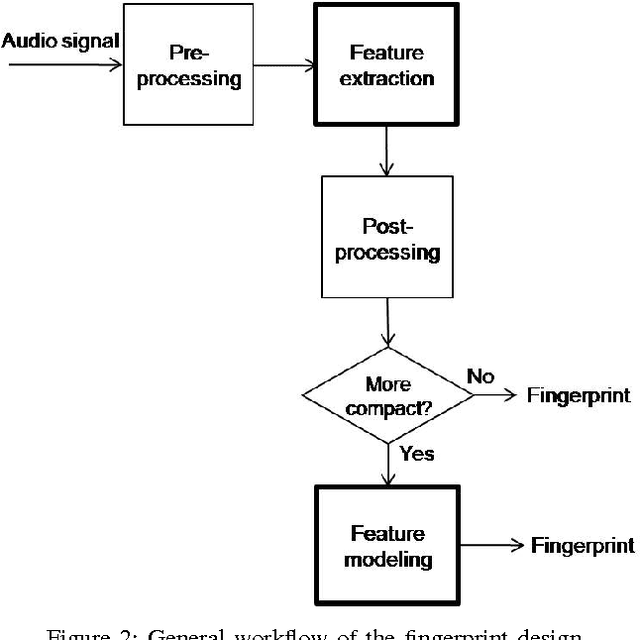A Review of Audio Features and Statistical Models Exploited for Voice Pattern Design
Paper and Code
Feb 24, 2015

Audio fingerprinting, also named as audio hashing, has been well-known as a powerful technique to perform audio identification and synchronization. It basically involves two major steps: fingerprint (voice pattern) design and matching search. While the first step concerns the derivation of a robust and compact audio signature, the second step usually requires knowledge about database and quick-search algorithms. Though this technique offers a wide range of real-world applications, to the best of the authors' knowledge, a comprehensive survey of existing algorithms appeared more than eight years ago. Thus, in this paper, we present a more up-to-date review and, for emphasizing on the audio signal processing aspect, we focus our state-of-the-art survey on the fingerprint design step for which various audio features and their tractable statistical models are discussed.
 Add to Chrome
Add to Chrome Add to Firefox
Add to Firefox Add to Edge
Add to Edge